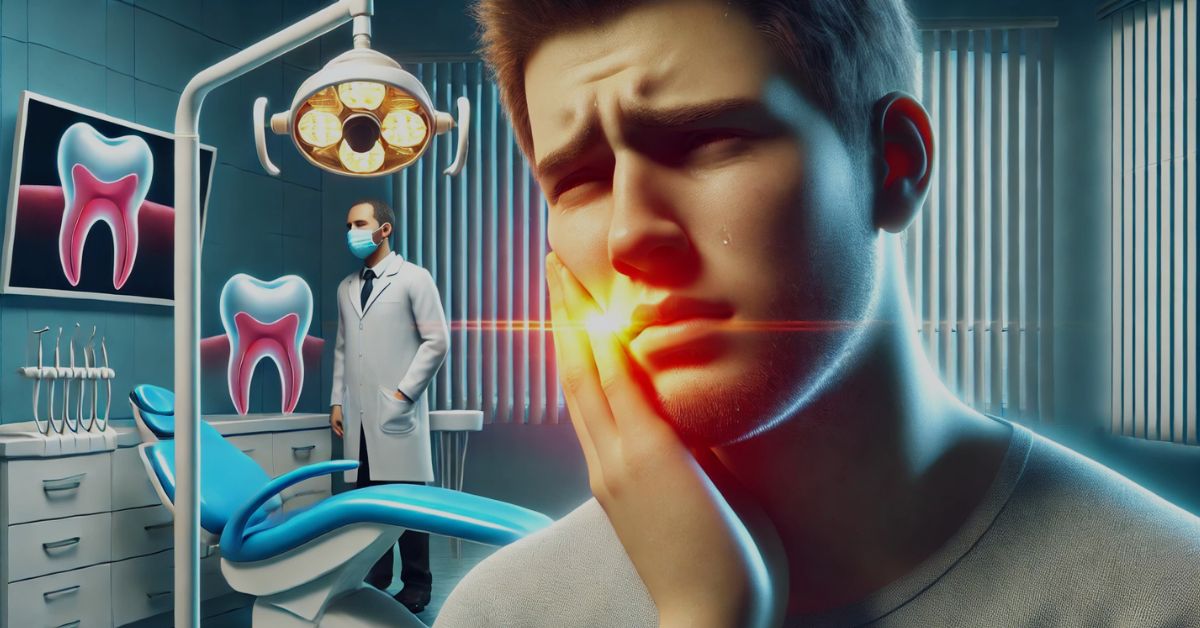Tooth fillings are a common dental procedure designed to restore decayed or damaged teeth. However, experiencing pain months after getting a filling can be concerning. If you’ve been asking, “Why does my tooth filling hurt after months?” you’re not alone. Understanding the causes and solutions can help you manage the discomfort and prevent further complications.
Contents
Understanding Tooth Filling Pain
Experiencing pain after a tooth filling is normal for a few days. However, if the pain persists for months, it may indicate an underlying issue that requires attention.
Types of Pain You May Experience
- Sharp pain – Occurs when biting or chewing
- Dull, throbbing pain – Constant discomfort without provocation
- Sensitivity to hot and cold – Discomfort when consuming temperature-sensitive foods or drinks
- Referred pain – Pain that spreads to other areas of the mouth or jaw
Causes: Why Does My Tooth Filling Hurt After Months?
Several factors can contribute to prolonged pain after a filling. Here are the most common causes:
1. High Filling or Bite Misalignment
If a filling is too high or not properly adjusted, it can cause excessive pressure when biting. This misalignment may lead to pain and discomfort over time.
Solution: Visit your dentist to adjust the height of the filling to restore proper occlusion.
2. Pulp Inflammation (Pulpitis)
Pulpitis occurs when the inner pulp of the tooth becomes inflamed. This can happen due to:
- Deep cavities before filling placement
- Trauma during the filling procedure
- Exposure to bacteria
Solution: Mild pulpitis may heal on its own, but severe cases may require a root canal.
3. Secondary Decay
Decay can develop under or around the filling if bacteria seep through tiny gaps. This leads to sensitivity and persistent pain.
Solution: Your dentist may need to replace the filling or recommend a more extensive treatment if decay has progressed.
4. Cracked or Fractured Filling
Over time, fillings can crack or wear down due to:
- Chewing hard foods
- Teeth grinding (bruxism)
- Temperature fluctuations causing expansion and contraction
Solution: A damaged filling needs to be replaced to prevent further complications.
5. Allergic Reaction to Filling Material
Some patients may have an allergic reaction to certain filling materials, such as amalgam (silver fillings). Symptoms include pain, swelling, and sensitivity.
Solution: If an allergy is suspected, the filling should be replaced with a hypoallergenic alternative like composite resin.
6. Nerve Damage
In rare cases, dental work can traumatize the nerve, leading to prolonged pain or even nerve death.
Solution: If the nerve is damaged beyond repair, a root canal or extraction may be necessary.
7. Gum Recession and Exposed Root Surfaces
If your gums recede, they may expose the root of your tooth, leading to increased sensitivity and discomfort around the filled tooth.
Solution: Desensitizing toothpaste, fluoride treatments, or gum grafting may help manage sensitivity.
READ MORE: What is the Strongest Natural Antibiotic for Tooth Infection?
Additional Causes of Tooth Filling Pain
Incorrect Bonding of the Filling
If the bonding process of a composite filling is not done correctly, it may lead to gaps where bacteria can enter, causing pain and sensitivity.
Solution: A poorly bonded filling needs to be removed and replaced correctly.
Microleakage
Microleakage happens when small gaps form between the filling and tooth, allowing bacteria and food particles to enter, leading to decay or infection.
Solution: Your dentist can seal or replace the filling to prevent further damage.
Changes in Biting Pattern Over Time
Teeth naturally shift over time, which may cause an initially well-placed filling to become misaligned, leading to discomfort.
Solution: A bite adjustment or replacement of the filling may be necessary.
Solutions: How to Relieve Pain from a Tooth Filling
If you’re struggling with ongoing pain after a filling, here are some effective remedies:
Visit Your Dentist for an Evaluation
A professional assessment can determine the root cause of the pain and provide appropriate treatment.
Use Over-the-Counter Pain Relievers
NSAIDs like ibuprofen or acetaminophen can help reduce pain and inflammation.
Apply a Cold Compress
A cold pack can minimize swelling and discomfort when applied to the affected area.
Avoid Hard, Sticky, and Sugary Foods
Foods that put excessive pressure on the filling or promote bacterial growth should be avoided.
Try Desensitizing Toothpaste
If sensitivity is an issue, using a toothpaste designed for sensitive teeth can help alleviate discomfort.
Consider a Mouthguard
If you grind your teeth at night, a custom mouthguard can protect your fillings and prevent further damage.
Opt for a Filling Replacement
If the filling is damaged, ill-fitting, or causing an allergic reaction, replacing it with a more suitable material may be the best option.
Maintain Good Oral Hygiene
- Brush twice daily with fluoride toothpaste
- Floss regularly to prevent decay around the filling
- Use an antibacterial mouthwash to reduce bacteria buildup
When to Seek Immediate Dental Care
Seek professional help if you experience:
- Severe or worsening pain
- Swelling around the tooth or jaw
- Fever or signs of infection
- Persistent sensitivity that does not improve
FAQs: Addressing Common Concerns
How long should a tooth filling hurt?
Mild sensitivity and discomfort can last a few days to a few weeks. However, pain lasting months is not normal and requires evaluation.
Can a tooth filling cause nerve damage?
Yes, in rare cases, deep fillings can irritate or damage the nerve, leading to prolonged pain.
Why does my tooth filling hurt after months, but not immediately after the procedure?
Delayed pain can result from secondary decay, filling wear, gum recession, or bite misalignment.
Will my tooth filling pain go away on its own?
If the pain is mild and due to sensitivity, it may improve over time. However, persistent or worsening pain requires professional attention.
Can I remove my tooth filling at home?
No, removing a filling at home is dangerous and can lead to further complications. Always seek dental assistance for necessary treatments.
Conclusion
If you’ve been wondering, “Why does my tooth filling hurt after months?” the answer lies in various potential causes, ranging from bite misalignment to secondary decay or nerve damage. Identifying the reason for your pain is crucial to finding the right solution. Consulting your dentist is always the best course of action to ensure long-term oral health and relief from discomfort.
Ethan Cole is a versatile writer at hsnime.co.uk, offering fresh perspectives and engaging content across various topics. With a passion for creativity and knowledge, Ethan aims to provide insightful articles that resonate with a diverse audience.






